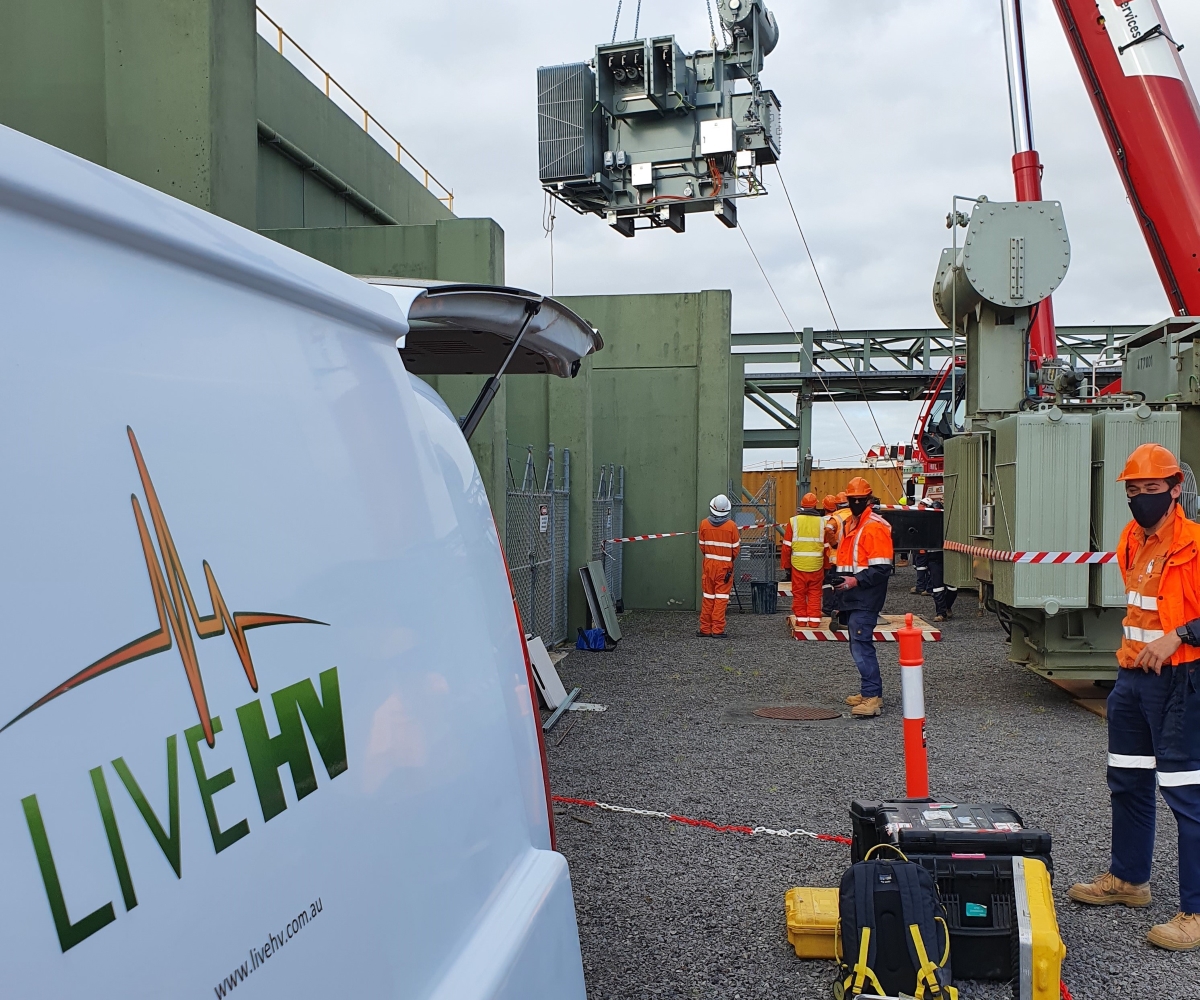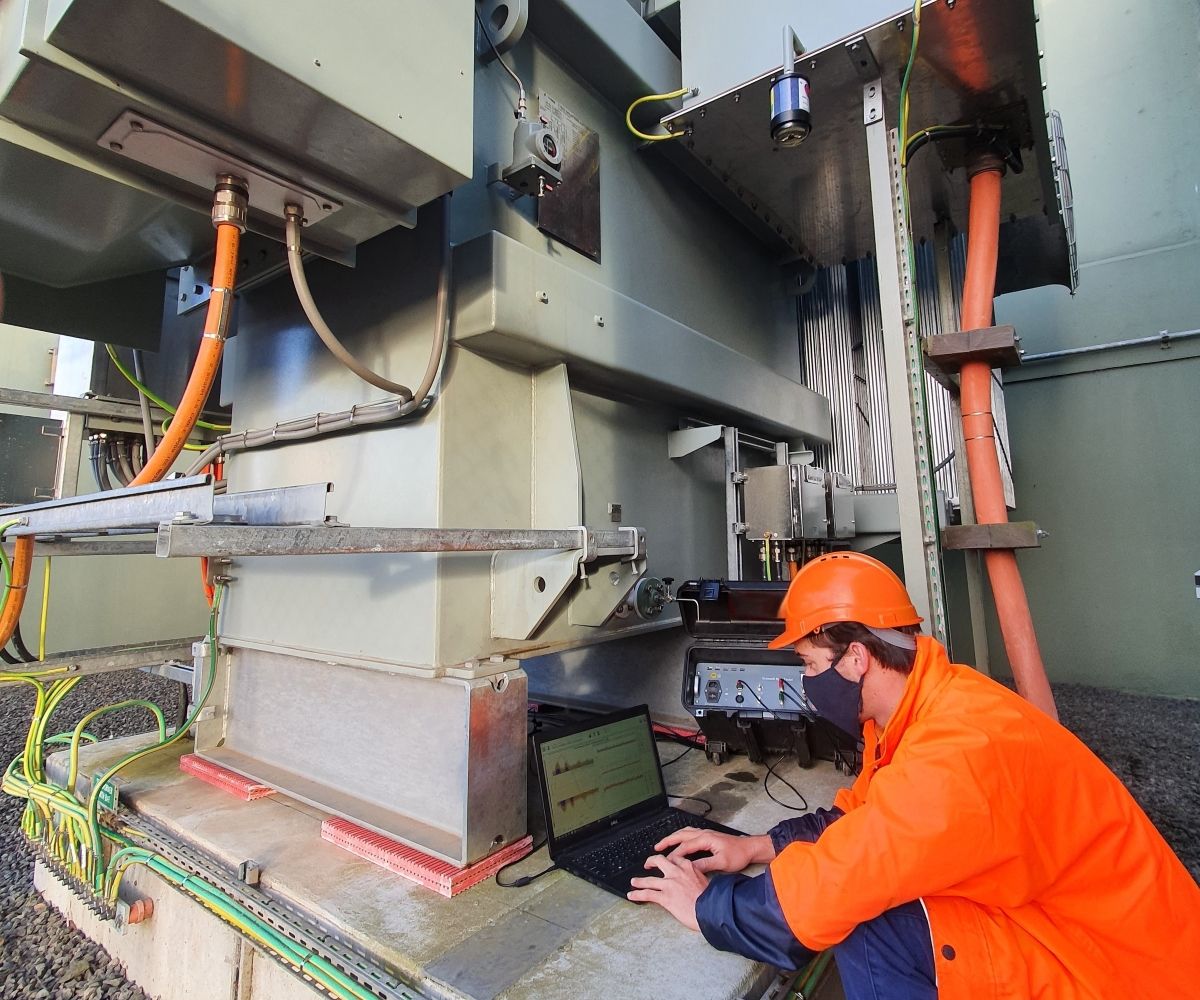Transformer Replacement and Commissioning
The Project
Following a period of online condition monitoring, where performance degradation had been identified, the decision was made to replace the critical distribution transformer at a gas plant. The transformer was essential to the supply of power to the plant, so the replacement was planned to occur during a 4-yearly maintenance shutdown.
Key Issues
- Disconnection and removal of old transformer
- Fitting the new transformer on the existing plinth without damaging existing HV cables
- Installing & commissioning within the shutdown window
Key Results
- Issue with tap changer identified and repaired
- Report provided immediately onsite following testing, actionable faults able to be remedied during the shutdown, i.e., no need for unplanned outages
- Full suite of testing provided
Key Outcomes
- Old transformer disconnected, new transformer in place within 3 days.
- New transformer commissioned and switched on within 7 days.
Factory Testing
Following the manufacturing process, a range of tests were performed on the transformer to justify its integrity as well as lay a benchmark to compare performing the commissioning on site.
Removal & Installation
Disconnection of the existing transformer was a straightforward process which took approximately 1.5-days to complete. On day-3 of the shutdown the new transformer was trucked to a position adjacent to its new home while the old transformer was removed from the plinth.
The 10 MVA replacement transformer was specifically chosen to use the existing plinth and cable run that was connected to the previous installation. A major hurdle was the correct placement of the new transformer as the existing HV cables had minimal play and had obsolete cable terminations meaning any damage would result in extensive re-work and time delays. Measurements and modelling were undertaken to ensure the correct fitment and employing the use of an expert crane operator resulted in the precise placement of the transformer without any major alterations to the plinth or cables. The entire removal and installation process was completed in under 3-days.
The Commissioning
A general inspection was followed by a full suite of electrical testing and functional testing prior to giving the approval to place the asset into service. Key tests including Partial Discharge and Sweep Frequency Analysis allow for checking the asset condition and benchmarking for future assessments.
Following the testing a 24-hr soak test was performed. During this period the transformer was constantly monitored for partial discharge to further confirm its operational integrity.
The Findings
The general inspection identified a couple of minor issues. Small areas of rust on the connection of the LV termination box breather were documented, to be monitored over future inspections. Additionally, a water leak in the neutral termination box was identified which was repaired prior to the soak test.
The range of electrical tests included Insulation Resistance & Polarization Index, Turns Ratio, Winding Resistance, Dielectric Dissipation Factor, Sweep Frequency Response Analysis, CT Ratio & Polarity and Contact Resistance. All test results were acceptable and within allowed variation from factory testing, proving that the transformer had experienced no damage during transit.
During functional testing an issue was identified with the automatic tap changer. In response to a change in voltage, the tap would change, however it would move in the wrong direction. This issue was corrected prior to the soak test.



